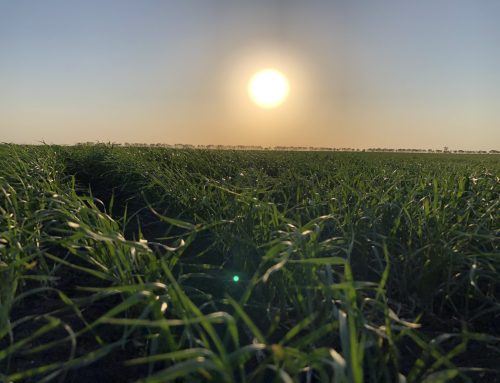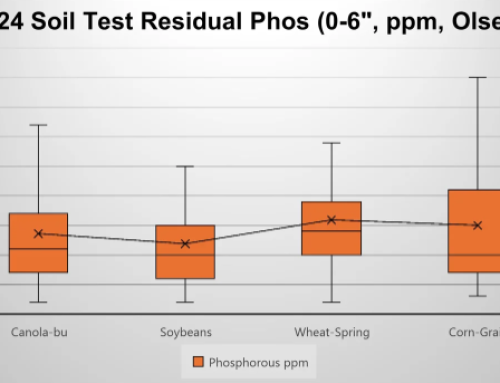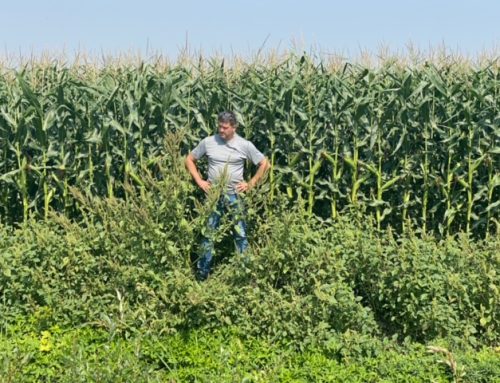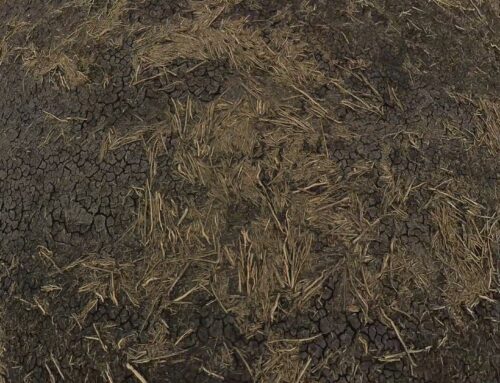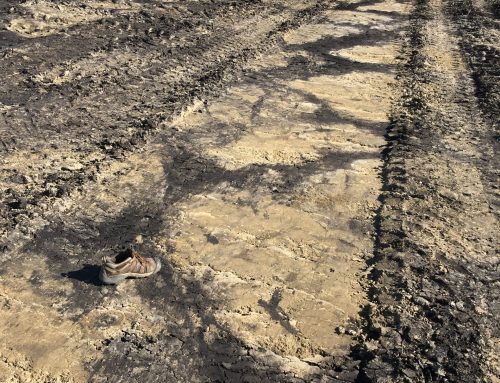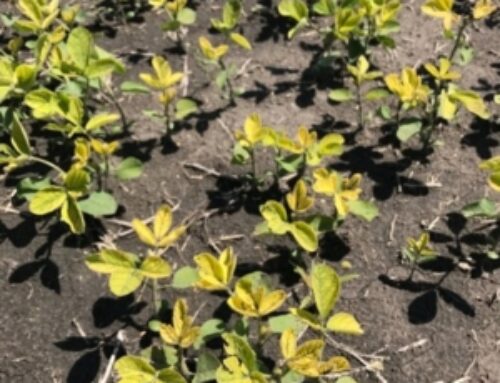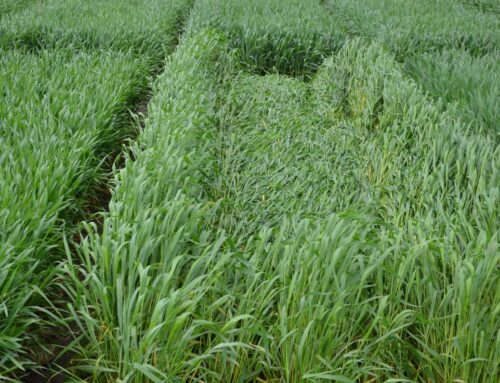Understanding the Impact of Tillage on Soil Health
We all know the importance of tillage. It’s a valuable and necessary tool in production agriculture that helps us produce viable crops by removing crop residue and incorporating it into the soil. However, improper tillage practices can have negative consequences for our soils. That is why it’s important to size the residue properly and use the right tools to reduce its impact.
As crop residue becomes an increasingly bigger challenge to manage, many farmers are turning to minimum tillage farming to reduce the negative impacts tillage can have on the soil. By properly sizing and incorporating crop residue into the soil, we can protect them from the drying effects of wind and sun while still getting our crops planted in a timely fashion.
Several tools are available to help us achieve this goal, and with better straw choppers becoming more common, producers can reduce the amount of tillage needed on their farms while still protecting their soils.
- Excessive tillage can lead to a lot of problems for your farm, including:
- Increased soil erosion
- Nutrient and organic matter leaching
- A reduction in water-holding capacity
- Increased compaction
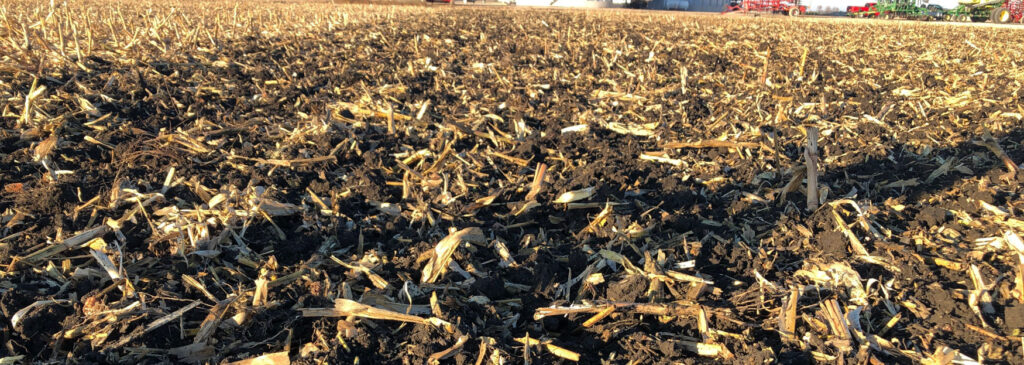
Soil Residue: Managing For Optimal Crop Production
It is important to understand that different crops will leave different residue levels.
Pulses and oilseed crops like canola produce very little easily incorporated residue, so many producers choose to leave it on the surface. On the other hand, cereals and corn produce residue that can be more difficult to manage.
Poor incorporation of residue results in a less than ideal seedbed. When residue is not well-incorporated, soils will be slow to dry and warm up in the spring. When residue is incorporated too much, soils will be prone to erosion since there will not be enough stubble to trap snow or stop the impact of rain.
Proper germination requires good seed-to-soil contact and soil residue can have a big impact on the condition of your fields. Soil residue coverage of 30-50% is usually considered adequate to minimize the impact of erosion while still allowing timely planting operations in the spring, but this will vary depending on the soil texture and the underlying moisture content in the fall conditions.
Tillage Equipment Options For Incorporating Residue
There are many tools available today to help with sizing and incorporating residue – from traditional harrows, cultivators, and heavy discs to newer vertical tillage tools and high-speed discs. There is no shortage of equipment combinations that allow for the sizing and incorporating residues to desired depths.
- Harrows can help break up straw and distribute residues more evenly on the surface. They work particularly well in cereal and canola stubble if you want to leave more standing stubble.
- Vertical tillage units do a good job of sizing residue while performing shallow incorporation. This will help blacken soils, but it may not be enough in situations where residue is quite heavy. Vertical tillage will leave a mat at the surface to trap moisture and insulate soils, although shallow-seeded crops will struggle to emerge in these situations.
- Field cultivators do not size residue, which can present a problem if it is not well chopped. These units do a good job of incorporating residue, but they have problems with plugging in high-residue situations. Cultivators can leave a rough seedbed finish in dry conditions which will require additional field passes.
- High-speed discs offer both good sizing and good incorporation. Many high-speed discs also come with baskets or packers that help consolidate soils and leave a nice level finish.
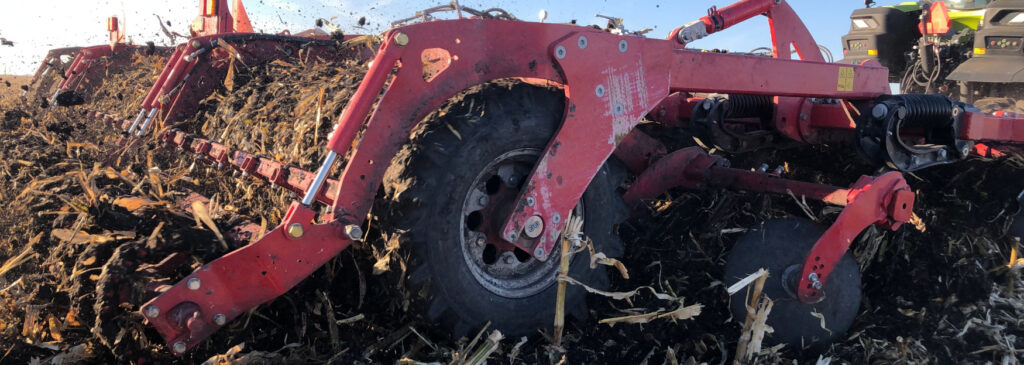
Comparing Tillage Systems
The soil moisture levels around Wahpeton, ND and Fergus Falls, MN, were measured from thaw to canopy closure at a 2″ depth under four tillage systems. You can see how tillage intensity affects both soil moisture losses and soil temperature. Increased tillage will warm the soil, but it might result in increased moisture loss.
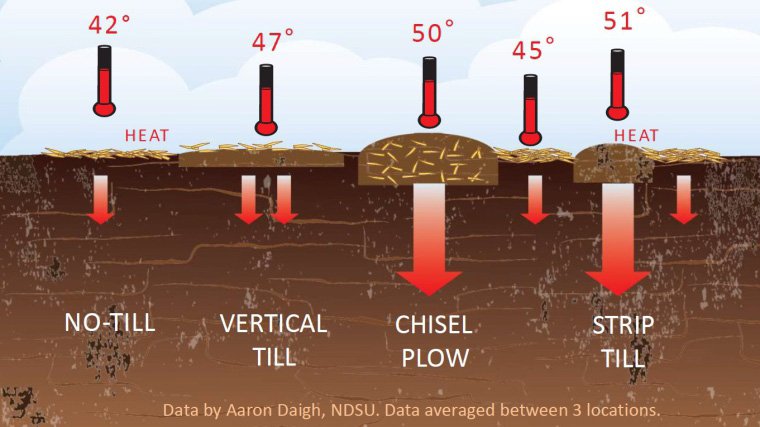
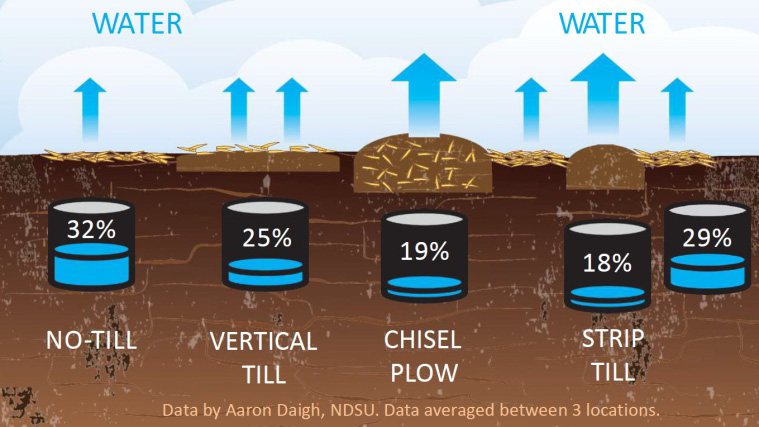
It is possible to make the case that there will be greater penetration if soils are looser; however, this would only extend as far as the cultivated layer. Overall, the less we disturb soil aggregates, worm tunnels, and root channels, the better water can flow, but excess residue on the surface can keep soils wet in the spring, as well as cooler and more moist throughout the season.
It’s not unusual to see bare soil surface temperatures exceed 60 degrees Celsius in late July/early August heat, whereas soils covered by residue are only half as hot. The sterilizing effect of hot weather combined with arid soils inhibits microbial activity and nutrient cycling.
How to measure percentage residue cover?
A common method used to measure residue cover is the Line Transect Method. A quick how-to is summarized below. You can contact us for an elaborate method:
The line transect method involves 5 easy steps:
- Use a 100′ tape measure.
- Stretch the tape diagonally across the rows at a 45-degree angle.
- Walk the length of the tape and count the 1ft marks that intersect residue.
- Count only 1/8″ and larger residue that would potentially stop a raindrop.
- Repeat 5 times to get an average of the field.
Comparing Different Tillage Methods
In the photo below, we compared 4 different tillage tools this fall, looking at the percentage of residue incorporated. The field was corn stubble, and we started with 70% residue coverage.
- The first pass on the left was with what we would call a light-duty field cultivator set at a 4″ working depth. This left a residue cover of 58%.
- The next pass was with a disc ripper set at a working depth of 4″ for the front discs and the ripper shanks at 8″s. This left a residue cover of 40%.
- The 3rd pass was completed using a high-speed compact disc set at 4-6″, resulting in a residue cover of 40%
- The last pass was with a high-speed compact disc set at 3-4″ working depth. The residue cover following this last application was 50%.
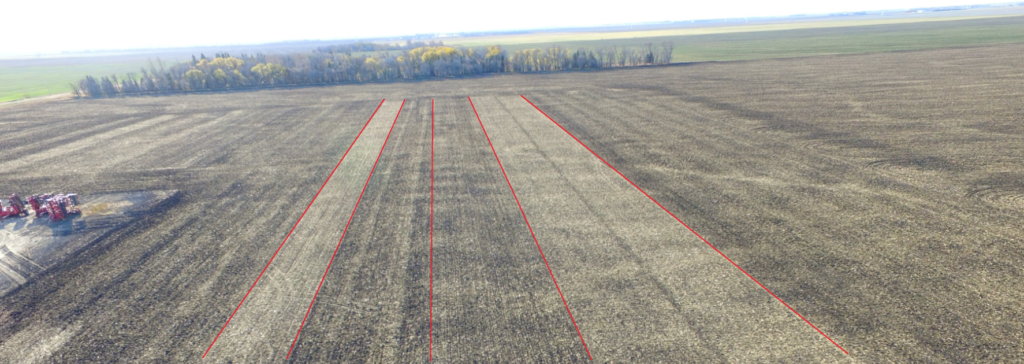
In summary, soil residue can have a big impact on the condition of your fields –to the point where it may be necessary to adjust your tillage equipment in order to properly size and incorporate it. The infographic included in this post provides an overview of how different tillage systems compare when it comes to soil moisture loss and temperature. Keep in mind that while increased tillage will warm the soil, it might result in increased moisture loss. Therefore, it is important to find the right balance for your operation. With proper residue management, you can improve the condition of your fields and ensure that your crops have the best possible chance of success.

